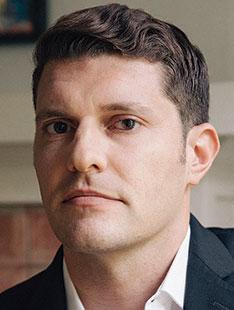When African American demonstrators filled the streets of Ferguson, Mo., in 2014 to protest the police killing of 18-year-old Michael Brown, officers met them with an aggressive response. “At first glance, it looked like a military battalion had been deployed,” says Jonathan Mummolo, assistant professor of politics and public affairs. “They were dressed in battle armor, they had high-powered rifles, and there were armored vehicles designed to withstand IEDs [improvised explosive devices] in Iraq.” The use of equipment designed for war seemed especially stark, given that it was deployed against unarmed civilians.
A former journalist who covered law enforcement for The Washington Post, Mummolo wondered whether such equipment was necessary, asking himself, “What do we actually know about these tactics — are there any benefits or costs?” When he examined the available data, he discovered that far from making the streets safer, such military tactics have little effect on crime and may diminish the reputation of police. He published his findings in July in the Proceedings of the National Academy of Sciences.Use of military equipment by police goes back to the 1960s, as part of the Johnson administration’s response to rising crime rates and a high-profile mass shooting at the University of Texas at Austin. Militarization ratcheted up as U.S. administrations focused on combating drug use and terrorism. When Mummolo began searching for data on the phenomenon, however, he found few concrete statistics. Among the hundreds of state and local law-enforcement agencies that he contacted nationwide, some kept no records while others purged them as a matter of policy. Some who kept records refused to provide them or charged exorbitant fees. “If we are going to be smart about how we reform policing, the first step is to empirically evaluate the consequences of what we are currently doing,” says Mummolo. “And for that we need data.”
In Maryland, he discovered that the state required police departments to record all deployments of SWAT (Special Weapons and Tactics) teams for five years as a response to a botched raid. Analyzing a database of some 8,000 deployments that were coded by location, Mummolo found that roughly 90 percent of SWAT deployments were for non-emergency situations, such as serving a search warrant. Moreover, he found that teams were much more likely to be called out to communities of color — for every 10 percent increase in a neighborhood’s African American population, there was a 10 percent increase in SWAT-team deployments.
The Maryland crime statistics showed no effect of the deployments on lowering crime in neighborhoods. Examining a national database that indicated the presence of SWAT teams by year, Mummolo again found no correlation. “You can compare agencies over time and see that when an agency gets a SWAT team, there is no evidence of decreases in violent crime or of officer injuries or death.” He even saw a slight increase in those statistics — suggesting that aggressive police tactics in some cases actually might promote more violence.
“I believe a lot of these chiefs and sheriffs are sincere when they say this is keeping their officers safer, but the data tell a different story,” Mummolo says. Moreover, an experiment he conducted suggests that militarization might hurt police by damaging public opinion of law enforcement. Mummolo created a news article about a police chief looking for a budget increase. The photo that accompanied the piece was randomly selected from among four that showed increasingly militarized law enforcement (see previous page). The more militarized the police in the image looked, he found, the more likely participants were to think crime was high in the community. At the same time, they were less likely to believe police were deserving of increased funds or to support increased police patrols in their own neighborhoods.
Mummolo attributes such sentiments to an erosion of trust. “You would think if crime was high, [people] might want to give police more resources, but if you are also reducing your trust in police, you might doubt their ability to do their jobs effectively,” he says. Taken together, all of the evidence suggests that militarization of police may do more harm than good. “The way the debate has been framed has largely been that it’s a trade-off between liberty and security,” he says. “But that’s not necessarily true. On average these tactics don’t seem to supply the supposed benefits — but we do have evidence they diminish support for police.”
How Civilians React To Militarization
Jonathan Mummolo randomly paired one of these four photos with a story he showed research subjects about a request for more money for a city’s police department. Photo A served as the control image, while photos B through D showed increasing levels of militarization. Each had the same caption: “Five city police officers stand guard during a local protest.” Mummolo found that civilian willingness to increase police department funds decreased as the level of militarization increased. Respondents also reported a perception of higher crime levels and a lower opinion of law enforcement when shown the images featuring elevated military-style force.





